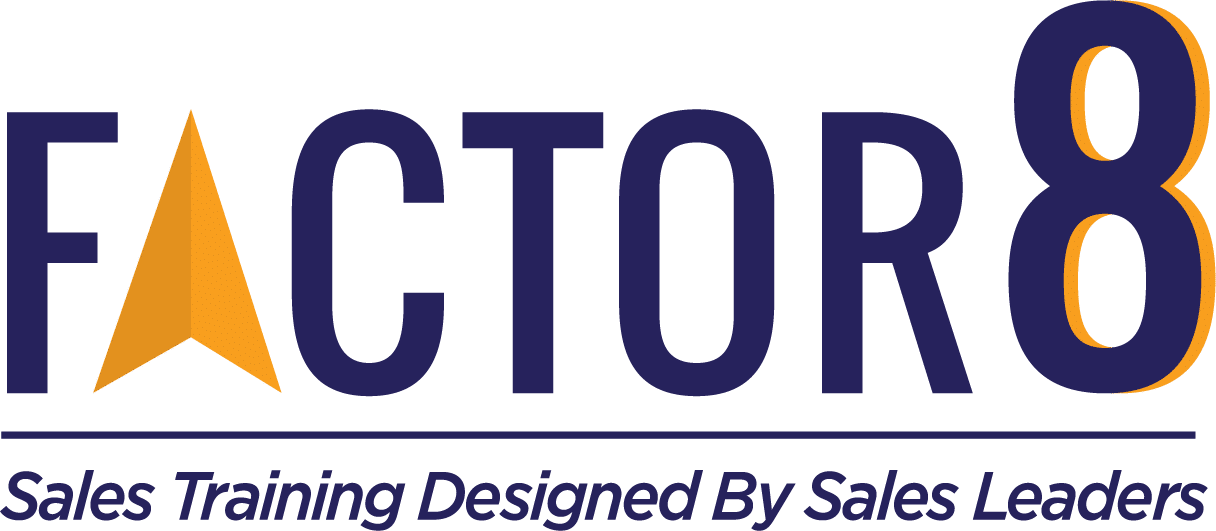Don’t Buy Training Until You Ask These Five Questions
First and foremost, kudos to you for investigating solutions to train your teams. More and more studies show us that reps and leaders want development and career opportunities more than nearly anything else! This is especially true in inside sales where we experience higher turnover. Now, how do we make sure that investment WORKS and delivers maximum ROI?
Regardless of the solution or vendor you’re investigating, here are five smart questions to ask to ensure what is delivered won’t be a disappointment.
#1 – What percent of the content is customized?
Unless you’re sending employees to a public seminar for new skills (great entry-level & low-budget option, but you’ll see less than 10% being applied back on the job), vendors will talk about customization. It is what makes it faster and easier for attendees to apply the new skills to their world, and application is step one in getting better results.
Unfortunately, truly customized solutions don’t scale well and are hard to execute well. I once paid a vendor nearly $10,000 for customized training that turned out to be three additional pages of content with a custom role play. So, get specific in your questions, like:
-
- What content is customized?
-
- Can you give me five examples of what is customized?
-
- How many pages are altered from the standard?
-
- What percent is this?
-
- What do you use to customize the training?
BONUS: have them explain exactly how 2 different packages differ. This will give you a feel for whether the same content is simply being marketed 2 different ways, or if they really get the difference between BDR, AE, and AM skills.
Net-net: More customization = more expense. So, if you’re shopping based on price and learn that only a few pages or role plays are custom, you’re probably in the right ballpark. If you have over 50 reps and are looking to make the custom training part of ongoing development or onboarding, on the other hand, I suggest spending the money to be sure every section references examples from your industry, your customers, and your product/service.
#2 – What is my facilitator’s background?
Truth is, some of the best classroom trainers are professional classroom trainers. That is their background. But this doesn’t fly in tactical sales training folks – you may as well let your HR team teach your reps to sell. If you want to see real results, you want a facilitator that has made the calls, coached the teams, and can deliver on-the-fly coaching on messaging and delivery.
It’s the training leader’s dilemma:
-
- Do I hire sales people and make them trainers?
-
- Do I hire training people and teach them sales?
In my 20+ years of building sales training teams in corporate America and Factor 8, the right answer is ALWAYS #1.
If you’re training reps or managers young in their careers, you should always pay for sales expertise. If you’re training senior executives, facilitating massive groups, or teaching more generic / softer skills, a professional facilitator is a better investment.
#3 – Please share results from similar companies / situations.
If your provider doesn’t have case studies showing results, that means they probably aren’t getting any – or they aren’t staying engaged long enough to care. There’s only one measurement when it comes to training sales teams and that’s sales results.
Remember, different training targets different outcomes, and different outcomes require different timelines. Look for:
Metrics – if your new skills will impact call volume, talk time, number of calls or longer calls, this can be measured the day after training (and again in coming weeks.) Training excitement will wear off from an initial high, but you still want to see a sustained lift if new habits were built well and your managers are engaged in keeping skills alive.
KPI’s – Between metrics and quota sit Key Performance Indicators. Perhaps you want to impact meetings booked, quotes sent, close rates within the funnel, pipeline built. Look for these results 2 weeks to 2 months after training depending on your sales cycle.
Results – One month to one quarter after training (sorry, sales-cycle dependent again) is when results should be pouring in. Absolutely this can happen faster (we’ve seen SDR/BDR results spike next day), but look for case studies that talk about actual revenue or quota impact.
#4 – Who was your audience for your last 5 gigs?
Because customization, experience, and application are so important (see earlier points), this question gives another look into where your vendor really plays.
We see a lot of “old school” curriculum companies now marketing to inside sales. Literally zero change in what they train, but a lot of ads targeting the now-fastest growing segment of sellers. There are also plenty of consulting companies touting training and vice versa. Try these follow-up questions:
-
- Without company names, walk me backward through your last five clients. What industry were they in?
-
- What were their sales cycles and average deal size?
-
- What were the company sizes?
-
- What type of sellers participated (field? BDR? Account Manager? Inbound?)
-
- What else did you do for these clients?
The key here is fast answers. If they don’t know the difference between an SDR and an AE we have a problem, right? If sellers were largely face-to-face bag carriers, red flag number two. If the experiance was largely strategy design, consulting, or system implementation + some training it could again be a warning sign.
You want a company that specializes in exactly what kind of selling you do. And if it isn’t the bullseye of the dartboard, it should be no more than one ring outside.
#5 – How do you make it stick?
One out of every five gigs we have the honor of replacing another vendor. Number one reason for the change? “It was good info but nothing happened afterward.” You may have felt the same way after telling reps what to do and watching nothing change. Truth: There’s a big difference between edu-taining (like that? Entertaining education) and training, and it all comes down to the stickiness factor. Great training makes the learning stick. Here is my shortlist of what makes the difference:
-
- Self discovery – Just like managing vs. coaching, the true Jedi masters get trainees to generate their own ideas while still arriving at the promised land. Look for white space in materials, lots of group work in the schedule, and no death by PowerPoint.
-
- Hands on application – Once they GET it, they have to USE it to have even a shot at being sticky. This is covered in role plays or better, live selling time. Application in a real-world scenario is 10x more effective than a pretend one (again, why customization is a key).
-
- Manager integration – Years ago, Training Magazine taught us that a trainee’s direct manager holds all the power in application with their attitude, communication, and involvement in the training. Look for your vendor to include managers in pre-work, roll-outs, the class itself, and ongoing support. We learned at Factor 8 that just attending the training wasn’t enough. So, Managers now have required companion classes for every Rep class. It’s that important.
-
- Ongoing leadership support – Is your vendor willing to be involved in post-training certification, results collection, Manager Q&A, best practice sharing? Are there tools, contest, follow up calls, or online support? If you want reps to stay focused, keep their boss focused.
-
- Fun – If you want learners to buy-in, remember you’ll increase the odds dramatically if they are having fun. Surely there are dozens of scientific studies about how positive emotions morph the hippocampus into longer recall…but let’s just trust logic instead. Look for contests, activities, facilitator personality, and company culture fit. We purposely talk about drinking beer on our website so companies with a rigid culture won’t call us first…believe me it won’t be a fit!
Stay armed with this guide during your next vendor selection process and you’ll be ten steps ahead of the training “forgetting curve” and well on your way to guaranteeing more buy-in, more application, and bigger results.


